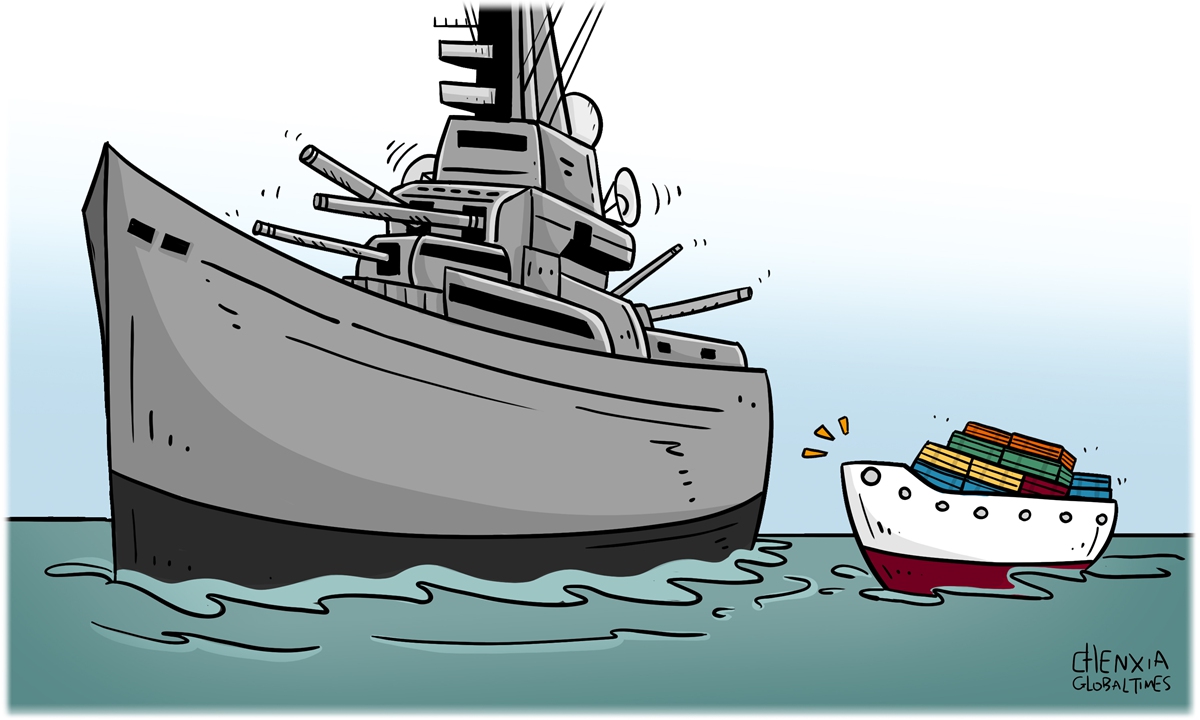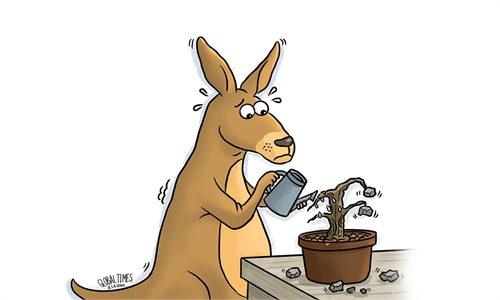
Illustration:Chen Xia/GT
Speaking at a joint press conference with his Indian counterpart about an interim bilateral trade deal on Wednesday, Australian Trade Minister Dan Tehan said that the Quad mechanism comprised of Japan, Australia, the US and India has helped the two parties reach the trade deal, the Associated Press reported.For the Australian trade minister to bring such a geopolitical tool, which is spearheaded by the US in splitting the region and pitting its allies against China, into a bilateral trade deal between Australia and India, the geopolitical aspirations behind the deal is very clear - that Canberra hopes it will help reduce its dependence on exports to China amid its increasingly unhinged anti-China mania.
Against the backdrop of bilateral tensions due to the Morrison government's unreasonable provocation against China, trade talks between Australia and India have long been hijacked by radical anti-China politicians in Australia. Last year, Australian special trade envoy to India and former Prime Minister Tony Abbott said a bilateral free trade deal would signal the "democratic world's tilt away from China."
By making a far-fetched association between the trade deal and Quad, Tehan's remarks are more like an attempt to expand the Quad mechanism's role in regional economic and trade matters. But that might just be another pipe dream for Canberra and its master in Washington.
The Quad mechanism is a closed security platform focused on confrontation. It is a geopolitical tool the US and its allies used to counter China, far from an open platform to promote regional free trade. Although there are signs that the US and Australia want to promote the bloc to play a bigger role in regional security matters, it can never replace other regional free trade platforms.
Since the Quad mechanism was proposed, its goal has been to forge a bloc against China both militarily and politically. But despite claims that the four countries have been ramping up efforts to build a so-called secure supply chain - a supply chain of key technology products like semiconductors that exclude the Chinese mainland - there have been no concrete plans and seemingly no progress.
Asian countries have multilateral free trade mechanisms such as the Regional Comprehensive Economic Partnership (RCEP), and have formed stable supply chains and mutually beneficial economic and trade relations. Although within the framework of the US' so-called Indo-Pacific strategy, the Quad mechanism hold the banner of "free and open," regional countries will not be fooled by the US' and Australia's scheme, and will not be used by them as a geopolitical chess piece against China.
Canberra has laid bare its intention to become Washington's cannon fodder regardless of its own national interests or that of the entire Asia Pacific region. But other countries in the region are clear-eyed and will never allow such a dangerous political divide in normal economic and trade cooperation.
China's win-win development path with other countries is full of vitality. Even all the Quad members, including Australia and the US, have massive trade ties with China. It is safe to say the vast majority of regional countries will keep improve trade ties with China.
Even Canberra has been begging for trade talks with China, while posing against China in many areas. To put it simply, it is impossible for Australia to solve its trade issues with China by advancing politically biased free trade with India or any other country. To resolve the China-Australia issue, Australia must scale back its hostility and stop holding economic and trade practices hostage to political calculations.
The author is an editor with the Global Times. bizopinion@globaltimes.com.cn


